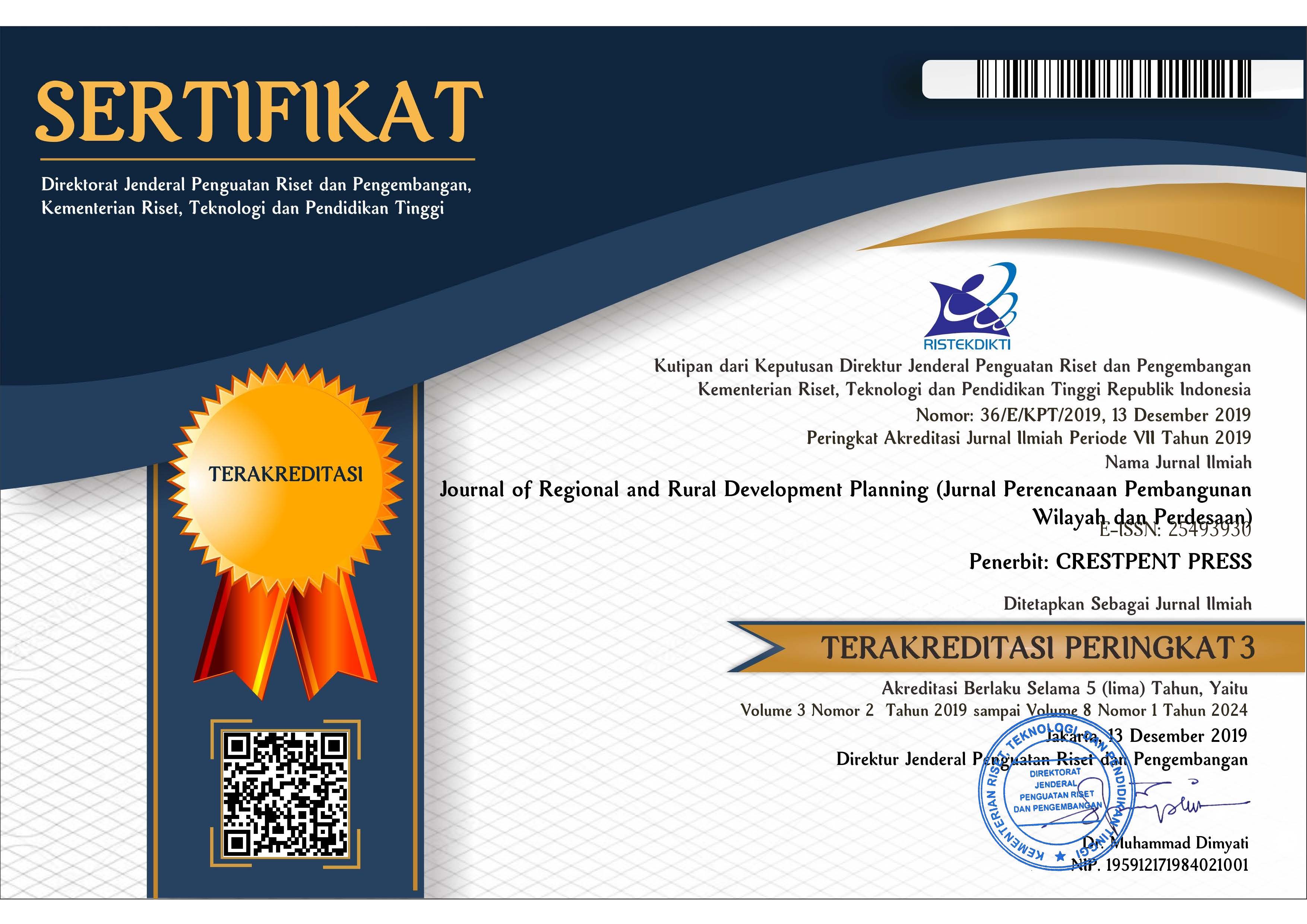Membangun dari Pinggiran: Tinjauan dari Perspektif Ilmu Ekonomi Regional
Abstract
Based on the experiences of various countries that were analyzed by the World Bank, regional development strategies can be classified into three classes based on the urbanization level (low, middle, high), i. e., to increase density (to create economies of concentration), to reduce distance (to develop connectivity), and to overcome division (to handle slump areas and the accompanying problems), respectively. The policy of “to develop from the periphery” can be interpreted as a strategy to increase the intensity of economic activities particularly in rural areas in order to create economies of concentration, i.e., cost savings and other benefits that are created by the concentration of economic activities in a region. This policy has been embarked simultaneously with a very big scale of infrastructures development, especially those related to transportation (roads, seaports, and airports). This article reports the results of a literature survey on regional development theories that are related with the policy. This article also discusses the Indonesian economic situations in which the policy has been implemented. In the later part of the article several research questions are formulated suggesting directions of further studies for empirically testing the hypotheses that can be derived from the research questions, especially those related with the implementation of “to develop from the periphery” policy.Copyright (c) 2017 Journal of Regional and Rural Development Planning

This work is licensed under a Creative Commons Attribution-ShareAlike 4.0 International License.




.png)














